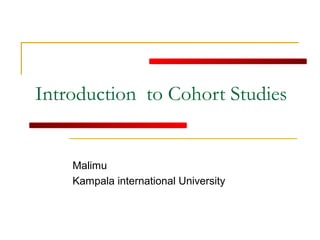A cohort study involves observing a group of individuals over time to examine exposure-outcome relationships. Key characteristics include prospectively following exposed and unexposed groups to compare disease outcomes. Major biases include loss to follow up and misclassification of exposure status. Cohort studies are well-suited for rare exposures and allow examination of multiple outcomes, but require large sample sizes and are time-consuming.




























